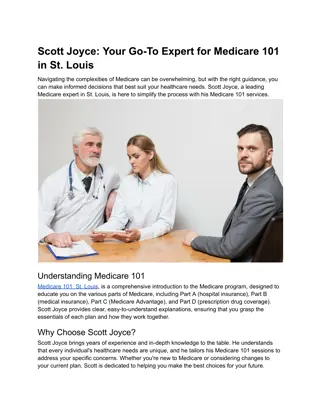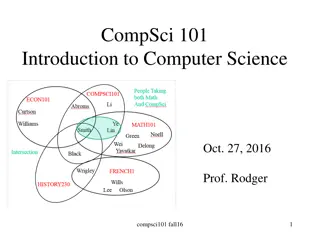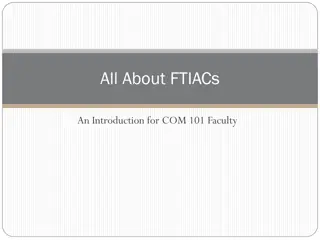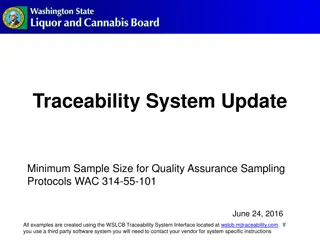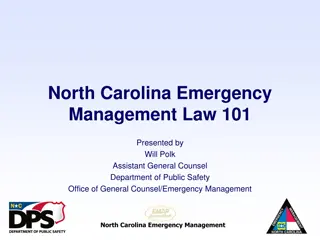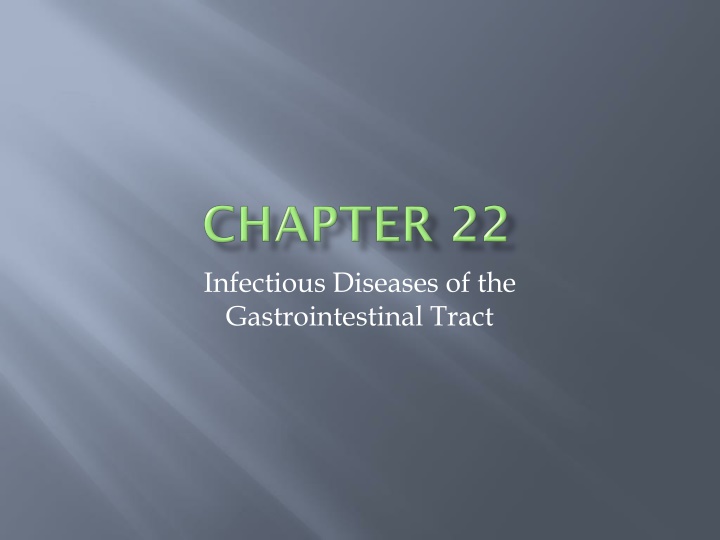
Gastrointestinal Tract Infections and Oral Health
Explore infectious diseases affecting the gastrointestinal tract, including tooth and gum infections, dental caries, and periodontal disease. Learn about the causes, symptoms, and prevention of these oral health issues.
Download Presentation

Please find below an Image/Link to download the presentation.
The content on the website is provided AS IS for your information and personal use only. It may not be sold, licensed, or shared on other websites without obtaining consent from the author. If you encounter any issues during the download, it is possible that the publisher has removed the file from their server.
You are allowed to download the files provided on this website for personal or commercial use, subject to the condition that they are used lawfully. All files are the property of their respective owners.
The content on the website is provided AS IS for your information and personal use only. It may not be sold, licensed, or shared on other websites without obtaining consent from the author.
E N D
Presentation Transcript
Infectious Diseases of the Gastrointestinal Tract
A. 22.3 Gastrointestinal Tract Diseases Caused by Microorganisms 1. Tooth and Gum Infections A) If left undisturbed, normal biota biofilm eventually contains anaerobic bacteria that can damage the soft tissues and bones (periodontium) surrounding the teeth B) Introduction of carbohydrates to the oral cavity can result in breakdown of dentition
C) Dental Caries (Tooth Decay) 1) This is an endogenous infection a) Most common infectious disease of humans b) Young are more susceptible than old 2) Causative agent Streptococcus mutans and sucrose a) Thrive in acidic environments, however saliva in the mouth keeps the pH normally about 7
3) Use pili to attach to tooth enamel 4) Metabolize sucrose to produce two chemicals a) Glucan a key component to dental plaque; makes the plaque impenetrable to saliva b) Lactic acid breaks down the tooth s enamel 5) Once the enamel is compromised, S. mutans, along with other oral bacteria, causes an infection of the underlying tissue
D) Periodontal Disease 1) Chronic inflammation of the gums (gingivitis) and tissues around the roots of the teeth (periodontitis) a) Primarily a disease of persons 35+ 2) Hundreds of bacterial species are involved but the most likely cause is Porphyromonas gingivalis
a) Release enzymes which cause a weakening of gingival tissue and the surrounding bone along with possible inflammation 3) Most individuals are asymptomatic but some experience bleeding & sensitive gums, bad breath, tooth discoloration, loosening of (and potentially the loss of) the tooth
2. Mumps A) Mumps is an acute viral infection of the parotid glands (Parotitis) B) The mumps virus belongs to the Paramyxovirus family C) Incubation period 2 to 3 weeks
D) Symptoms include fever, headache, sore throat, face pain, and swelling of the parotid glands E) In addition to targeting the parotid gland, the virus also targets the testes, ovaries, meninges and pancreas F) Transmission is by direct contact or by inhaled respiratory droplets
3. Gastritis and Gastric Ulcers A) Inflammation of the stomach associated with the production of gastric ulcers B) Caused by Helicobacter pylori 1) It is acidophilic and urease positive C) Can develop into gastritis, gastric ulcers, or duodenal ulcers 1) Gastritis: sharp or burning pain emanating from the abdomen
2) Gastric ulcers are actual lesions in the mucosa of the stomach 3) Duodenal ulcer: lesion in the uppermost portion of the small intestine 4) Severe ulcers can be accompanied by bloody stools, vomiting, or both D) Infection can persist for years or life 1) Long-term infection with H. pylori might be a contributing factor to stomach cancer
4. Diarrheal Illnesses A) In the U.S., up to a third of all cases transmitted by contaminated food B) Most cases are self-limiting and do not require treatment
C) Salmonellosis 1) Caused by numerous strains of Salmonella a) The most common cause is Salmonella enteritidis 2) Salmonella is among the normal flora of the GI tract of many animals
a) Frequently found in food products such as eggs, poultry, milk, and mayonnaise b) Transmission is primarily by eating raw or undercooked food products 3) Symptoms include fever, abdominal cramps, and diarrhea lasting 4-7 days and passing without treatment
D) Typhoid Fever 1) Caused by Salmonella typhi 2) Fecal-oral route of transmission; attacks the small intestine 3) Without treatment, symptoms include high fever (103-104o), malaise, stomach pains, loss of appetite and in some cases a rash develops
a) The fever can last for weeks-months if not treated; 2-3 days with treatment 4) Symptoms usually pass in about a month but patients may still harbor and spread the bacteria for long periods 5) It often resides in the gallbladder of asymptomatic hosts (ex. Typhoid Mary infected ~53 people without ever becoming ill)
E) Shigellosis (Dysentery) 1) Primarily caused by Shigella dysenteriae (not common is U.S.), Shigella flexneri, and Shigella sonnei a) The bacteria attack the large intestine 2) It is transmitted via a fecal-oral route
3) Produces a potent toxin known as Shiga toxin which causes a breakdown of the intestinal lining 4) Symptoms include fever, inflammation of the gut wall, profuse diarrhea often containing blood & mucus
F) Escherichia coli infections 1) Gram-negative, lactose-positive rod 2) The most virulent strain is E. coli O157:H7 3) Virulent strains include: a) Enterohemorrhagic E. coli (E. coli O157:H7) i) Symptoms range from mild gastroenteritis with fever to bloody diarrhea
ii) About 10% of patients develop hemolytic uremic syndrome (can cause kidney damage and failure) iii) Can also cause neurological symptoms such as blindness, seizure, and stroke b) Enterotoxigenic E. coli i) Causes severe diarrheal illness in the small intestine
c) Enteroinvasive E. coli i) Causes an inflammatory disease of the large intestine d) Enteropathogenic E. coli i) Linked to a wasting form of infantile diarrhea e) Enteroaggregative E. coli i) Can cause chronic diarrhea in young children and in AIDS patients
G) Campylobacteriosis 1) The leading bacterial form of diarrhea in the U.S. 2) Caused by Campylobacter jejuni 3) Fecal-oral route of transmission
4) C. jejuni is among the normal flora of many animals especially poultry (89% of raw poultry harbors the pathogen) 5) C. jejuni can result in a rare complication called Guillain-Barre syndrome that is characterized by generalized paralysis
H) Clostridium difficile (C. diff) 1) Causes pseudomembranous colitis 2) Major cause of diarrhea in hospitals 3) Able to superinfect the large intestine when drugs have disrupted the normal flora 4) Produces two enterotoxins (toxins A and B) that cause areas of necrosis in the wall of the intestine
I) Cholera 1) Caused by Vibrio cholera 2) V. cholera is acquired via fecal-oral transmission, binds to cells in the small intestine a) Produces a powerful enterotoxin (cholera toxin) that results in the loss of ~20L of fluid daily (10x normal)
i) Commonly referred to as rice-water stool 3) If untreated, can cause death in 48 hours and has a 55% mortality rate
J) Cryptosporidium 1) Caused by Cryptosporidium parvum 2) Ingested as cysts, usually when agricultural run-off has contaminated a water supply 3) Prevalent in cattle but not identified as a threat to humans until the AIDS epidemic 4) Characterized by fever, loss of appetite, nausea, crampy abdominal pain & profuse, watery diarrhea
K) Rotavirus 1) Causes most cases of viral gastroenteritis in infants and children 2) Initial symptoms include vomiting and a slight fever followed shortly by profuse, watery diarrhea 3) Effects of infection vary with age, nutritional state, general health, and living conditions of the patient
4) Symptoms generally pass in about a week but can last for weeks in some cases 5) Two vaccines are available but have to be administered at 2 & 4 (or 2, 4, & 6) months to be effective
L) Norovirus 1) Noroviruses are responsible for half of all cases of viral gastroenteritis in the U.S. 2) Transmission is fecal-oral route or from eating contaminated shellfish 3) Symptoms include nausea, vomiting, diarrhea and stomach cramps which usually pass in 12-60 hours even without treatment
M) Giardiasis 1) Most common waterborne illness in the U.S. 2) Caused by Giardia lamblia 3) Symptoms are generally mild including indigestion, nausea, diarrhea with a floating stool, flatulence, and abdominal cramps a) Symptoms may last for several weeks
4) Transmitted via fecal-oral route usually via contaminated drinking water 5) Symptomatic & asymptomatic patients become long-term carriers
5. Hepatitis inflammation of the liver A) Hepatitis A (HAV) 1) Spreads via fecal-oral route 2) Most infections are asymptomatic or show only mild symptoms a) Jaundice is rare and the virus is not linked to liver cancer 3) A vaccine is available
B) Hepatitis B (HBV) 1) It is transmitted via blood and body fluids with a small infectious dose a) Transmission has been traced to the sharing of razors and toothbrushes 2) Jaundice, tender swollen liver, coke- colored urine, and clay-colored stool are common symptoms
a) Chronic infections can lead to cirrhosis & liver cancer 3) A vaccine is available
C) Hepatitis C (HCV) 1) Considered a silent epidemic a) Takes many years to cause noticeable symptoms 2) Transmission is via blood and body fluids 3) Symptoms similar to Hepatitis B including jaundice, coke-colored urine, and clay-colored stool
a) Chronic infections can lead to cirrhosis & liver cancer 4) There is no vaccine
D) Hepatitis D (HDV) 1) Can only infect individuals with HBV 2) Transmission is via blood and body fluids 3) Magnifies the symptoms of HBV 4) There is no vaccine
E) Hepatitis E (HEV) 1) Similar to HAV; fecal-oral route; mild prolonged infection 2) Not yet common in the U.S. 3) There is no vaccine
F) Hepatitis G (HGV) 1) Transmitted in blood and body fluids 2) Although not directly linked to HBV or HCV, often seen as a co-infection in those patients 3) Generally asymptomatic or causes only mild symptoms in individuals with only HGV 4) There is no vaccine
G) Treatments 1) HAV no specific treatment as it will often resolve itself spontaneously; patient should, however, abstain from drugs and alcohol during this time 2) HBV only treatment for acute infections is rest along with high carb/high protein diet to repair damaged liver cells; chronic patients may be given interferon
3) HCV along with the commonly used ribavirin, multiple drugs, including Harvoni and Epclusa, have been approved 4) HDV, HEV, HGV there are no effective treatments as of yet
6. Parasitic Infections of the GI Tract 1. Tapeworms A) Multiple types but all are associated with ingestion of undercooked, contaminated meat products 1) Taenia saginatus beef 2) Taenia solium pork 3) Diphyllobothrium latum fish 4) Dipylidium caninum dog/cat
B) Tapeworm infections often go unnoticed, but it can be serious if tapeworm obstructs the GI tract 1) If symptoms are present they are often nonspecific such as upset stomach, diarrhea, weight loss, anemia, weakness, fatigue, and occasionally eggs or larva in the stool C) Treatment usually targets only adult tapeworms; thorough hand-washing is a must to prevent reinfection
2. Flukes A) Opisthorchis sinensis & Clonorchis sinensis Chinese liver flukes 1) Associated with eating raw or undercooked fish 2) Flukes reside in the bile duct 3) Biliary inflammation/obstruction and liver damage can occur from chronic infections





